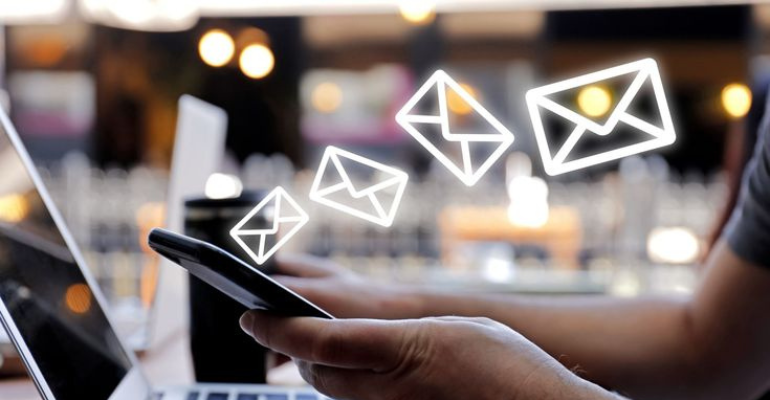
Email Marketing: Unveiling the Power of Customer Journey Mapping
Establishing meaningful connections with customers is paramount for businesses and marketers in today’s competitive landscape. Gone are the days when uniqueness alone could attract audiences. Today, customers seek brands that not only offer solutions but also make them feel heard. Crafting a well-defined customer journey is essential to achieving this. In this blog, we explore the significance of customer journey maps, their components, benefits, and how to leverage them for impactful email campaigns.
Understanding Customer Journey Maps:
A customer journey map is a visual representation of a customer’s interactions with a company throughout various stages of the sales funnel. It provides insights into factors influencing customer progress or hindrances at different stages. Utilizing these insights in email campaigns can leave a lasting impression on customers, aligning with their unique interactions, behaviors, and preferences.
Components of a Customer Journey Map:
While every business’s customer journey map is unique, certain fundamental elements are universal:
Customer Journey Stages:
Awareness
Consideration
Decision
Retention
Loyalty
Customer Pain Points:
Identifying and addressing customer pain points is crucial for an efficient and organized customer experience, leading to enhanced conversion rates.
Personas:
Understanding buyer personas through data collection helps in shaping hyper-personalized customer journeys.
Touch Points:
Identifying all possible touch points, both physical and digital, ensures a memorable customer experience and strengthens brand reputation.
Emotions:
Considering customer emotions at each stage fosters a positive emotional connection, strengthening customer relationships.
Benefits of Customer Journey Mapping:
Develops a deep understanding of customer behaviors.
Prioritizes inbound marketing by drawing customers through relevant content.
Empowers superior customer service by addressing pain points, emotions, and buyer personas.
Facilitates customer-centric decisions, improving retention rates and loyalty.
Streamlines the buying process, making it seamless for customers.
Leveraging Customer Journey Map for Email Marketing:
Effective Segmentation:
Divide customers into segments based on personas for tailored content, resulting in increased interaction and engagement.
Automated Workflows:
Understand customer interactions to configure automated workflows, delivering the right message at the right time.
Conversion-Driven Email Copy:
Leverage insights to compose email copy that resonates with customers, driving higher conversion rates.
Brand-Infused Templates:
Understand customers’ preferences to infuse brand elements into templates, creating a unique brand identity and appealing to customer sensibilities.
Conclusion:
In 2023, customer-centricity is pivotal for email campaign success. Diligent data collection and clear goals empower the creation of insightful customer journey maps, laying the foundation for impactful email marketing campaigns. The shared insights aim to guide businesses in this endeavor, ensuring their email campaigns truly pack a punch.
Title: Essential Considerations for Effective Triggered Email Campaigns
Introduction:
Triggered emails, sent automatically in response to specific actions, have gained popularity among marketers due to their higher open and click-through rates. However, before diving into the world of triggered emails, it’s crucial to address some fundamental questions. In this article, we explore six key considerations to ensure your triggered email campaigns are optimized for success.
Have You Optimized Your Core Email Efforts?
Before delving into triggered emails, ensure your foundational email efforts are optimized. Pay attention to subject lines, fonts, mobile-friendly templates, links, and landing pages. A strong email base sets the stage for effective triggered campaigns.
Should You Implement Frequency Caps?
Consider the frequency at which triggered emails are sent. Whether it’s a welcome email, order confirmation, website visit, or cart abandonment, defining the optimal frequency is vital. Assess if your industry requires frequency caps and if they should vary for specific lists, segments, or individuals.
Can You Customize Triggered Email Rules for Different Recipients?
Tailor rules for triggered emails based on individual recipient characteristics. A one-size-fits-all approach may not be suitable. For instance, a shopping cart abandonment email might need different rules for a mistaken abandonment versus intentional delay.
How Can You Maintain Uniqueness?
In a world where triggered emails are becoming commonplace, standing out is crucial. Innovate and create unique triggered emails to avoid blending into the competition. Explore different customer actions linked to each triggered email for a distinctive approach.
Do Triggered Emails Influence Recipient Behavior?
Consider the impact of triggered emails, especially when discounts or coupons are involved. Analyze if recipients delay purchases expecting discounts and whether consumers manipulate the system. Understand how triggered emails shape recipient behavior and if it aligns with your campaign goals.
Are You Measuring Success Effectively?
Ensure proper measurement of success by accounting for organic percentages—customers who would have taken the desired action without the triggered email. Consider the incremental benefits and costs associated with implementing triggered campaigns. Measure not only direct sales but also intangible benefits related to customer service.
Conclusion:
While triggered emails offer significant advantages in relevance and response rates, they require thoughtful consideration. Addressing the questions outlined above ensures that your triggered email campaigns are not only effective but also contribute to long-term customer engagement, loyalty, and brand success.




